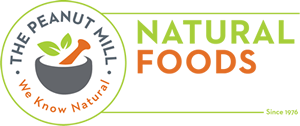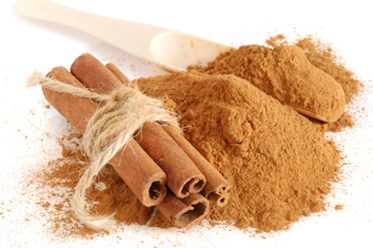[fusion_builder_container hundred_percent=”no” equal_height_columns=”no” hide_on_mobile=”small-visibility,medium-visibility,large-visibility” background_position=”center center” background_repeat=”no-repeat” fade=”no” background_parallax=”none” parallax_speed=”0.3″ video_aspect_ratio=”16:9″ video_loop=”yes” video_mute=”yes” overlay_opacity=”0.5″ border_style=”solid”][fusion_builder_row][fusion_builder_column type=”1_1″ layout=”1_1″ background_position=”left top” background_color=”” border_size=”” border_color=”” border_style=”solid” border_position=”all” spacing=”yes” background_image=”” background_repeat=”no-repeat” padding=”” margin_top=”0px” margin_bottom=”0px” class=”” id=”” animation_type=”” animation_speed=”0.3″ animation_direction=”left” hide_on_mobile=”small-visibility,medium-visibility,large-visibility” center_content=”no” last=”no” min_height=”” hover_type=”none” link=””][fusion_text]
Explore The Medicinal Magic Hidden In Your Cupboard
The culinary and medicinal powers of spices have been known by herbalists, healers, and cooks for centuries. Now science is affirming what folklore medicine has known all along. Spices such as cinnamon, ginger, turmeric, cardamom and coriander boast not only rich colours and fragrances, but also strong therapeutic effects as well. Indeed, there is a world of healing magic hidden in your spice cupboard.
The onset of winter is a perfect time to draw closer to the home fires and dip into our stash of warming spices that help bolster the body against frigid temperatures and circulating ‘flu bugs. Of themany herbs that arrive in our local stores from international spice routes, those that bring heat to winter meals are most sought after. Lets explore some of my favourites:
CINNAMON (Cinnamomum cassia) – is a member of the Lauraceae family. It is a warming spice that helps to reduce dampness in the body by increasing circulation. It is antiseptic and an excellent digestive tonic, and is known to mimic the action of insulin (the hormone in the body that regulates blood sugar) by stimulating insulin receptors on the fat and muscle cells. This action helps to usher sugar out of the blood and into the cells. As a result, the simple addition of one gram of cinnamon to the daily diet of people with Type 2 diabetes has been shown to improve blood sugar levels, as well as blood fats, to reduce their risk factor for cardiovascular disease.(1)(2)
Adding cinnamon to the diet can also help you reduce muscle soreness after exercise. Cinnamon contains a range of compounds that help reduce the damage of oxidation and inflammation – both of which are elevated after an intense workout. Recent studies show that less than 1 tsp per day of cinnamon or ginger can significantly reduce this type of muscle soreness.(3)
Cinnamon is best when freshly ground so try to buy whole cinnamon sticks and grind them as you need them with a fine grater or a sturdy spice grinder. You can also add a whole stick to soups and stews, where it can simmer before serving. If you can only find ground cinnamon, look for Ceylon cinnamon from Sri Lanka as it is considered to be the best quality.
GINGER (Zingiber officinale) – is a member of the Zingiberceae family. Like cinnamon, it improves circulation to all parts of the body. This fragrant root can soothe an upset stomach and has been used for centuries for this purpose. Scientists have found that ginger suppresses the release of vasopressin, a hormone thought to be responsible for nausea caused by motion sickness.
You can also use ginger to stop nausea and vomiting during pregnancy: In recent studies, ginger was shown to be just as effective at relieving nausea and vomiting as pharmaceutical drugs. Further, it can boost the immune systems of both mother and baby in the process. Ginger also has a cleansing effect on the digestive tract, and reduces the stress put on the liver during pregnancy. (4)
Ginger also has the ability to heal painful inflammation by inhibiting the effects of arachadonic acid, a fat responsible for triggering the inflammation involved in the immune response, which ultimately leads to pain at the site. Boosting your ginger intake can reduce the pain caused by such inflammation. Choosing ginger as an alternative to anti-inflammatory drugs gives the liver a break from working overtime as it clears these drugs from your system. Chop up a little fresh ginger root and add it to a stir-fry, or grate some into your mint tea.
Ginger is so versatile you can even add it to your bath! Soaking in a hot bath infused with chunks of ginger will relax the muscles, raise the body temperature, and induce sweating – all of which helps to fight off colds and ‘flus.
Fresh ginger is more potent than dried. When buying ginger root, look for knobs that have smooth, firm skin and are free from mould. Store ginger in a paper bag in the refrigerator for up to two weeks. To keep it longer, peel and freeze it in a freezer bag. When you need it, just grate it and go!
TURMERIC (Curcuma longa) – is also a member of the Zingiberaceae family. It is a deeply warming spice that contains powerful antioxidant and anti-inflammatory properties. Known for its intense yellowish orange colour, turmeric has played an important role in many traditional cultures for thousands of years and is highly valued in the practice of Ayurveda. The true value of this medicinal root is only beginning to be understood in the west, thanks to new scientific research that is revealing the depths of its healing powers.
Turmeric improves circulation by reducing elevated blood levels of fibrinogen. Fibrinogen is a plasma protein that plays a key role in the process of blood clotting. Elevated levels of this protein are known to be a major risk factor for heart attack and stroke. Turmeric has been shown to reverse elevated blood levels of fibrinogen safely and without side effects. (5)
Curcumin, the active ingredient in turmeric, works by stimulating the liver and gall bladder to do the essential work of bile production. Studies have found that curcumin reduces symptoms of bloating and gas in people suffering from indigestion. Turmeric stimulates the bile-forming function of the liver, as well as the conversion of cholesterol into bile salts. Turmeric’s ability to support the liver while cleaning the lymphatic system makes it an ideal herb for spring cleansing (along with beets and dandelions). (6)
Turmeric is best known for its amazing ability to reduce inflammation. Studies show that curcumin has the ability to protect and heal almost every organ in the body. It is the antioxidant action of curcumin that prevents oxidation in the organs, thereby reducing the low-grade inflammation that comes with chronic disease. (7)
Turmeric is a root that looks a lot like ginger, but it is quite difficult to grind. If you buy your turmeric already ground, make sure you buy small quantities of good quality powder, and use it up before you buy more.
Try Turmeric Tea – In a pint-canning jar, place a handful of dried lemon balm leaves, a few slices of turmeric and ginger root and several crushed rose hips. Pour freshly boiled water over the herbs. With the lid sealed, brew for four hours under a tea cozy or wrapped in a towel. Strain and enjoy as is or with a bit of honey.
CARDAMOM (Elettaria cardamomum) – also belongs to the ginger family. Cardamoms are the small dried fruits of the perennial herb, Elettaria cardamomum, known as the “Queen of Spices.” It has a pleasant aroma and a warm, slightly sweet and pungent taste. Cardamom is widely used in Asian cooking and is an essential ingredient in garam masala.
Cardamom helps to reduce symptoms of gastrointestinal disorders such as constipation and diarrhea. Studies show that it can also have a positive effect on blood pressure – a 3 gram serving has been shown to significantly decrease diastolic pressure, without side effects. (8)(9)
Cardamom has also been shown to have strong anti-microbial activity against the microorganisms that cause dental cavities and bad breath. (10)
Cardamom seeds lose their flavour and aroma quickly after being removed from their protective pods, so it is best to buy whole cardamom pods. Then crack the pods, remove the seeds, discard the pods and grind the seeds. Ground cardamom can be found at your local grocery store but it typically has less flavour than the whole seeds. You only need a little to give your recipes a sweet, aromatic vanilla undertone.
CORIANDER (Coriandrum sativum) – belongs to the Apiaceae family and is ground from the seeds of the coriander herb, which is also known as cilantro. Coriander seeds have a sweet, nutty taste that is very different from the leaves of the plant. These seeds are packed with volatile oils that provide powerful antioxidant protection.
Coriander can relieve the pain and discomfort of irritable bowel syndrome (IBS). Studies show that people who suffer from the abdominal pain, cramping and bloating of IBS see improvements after taking coriander seed. The spice possesses antispasmodic properties which help to relax the overactive muscles of the digestive tract. This relaxing effect also works on the arteries of the cardiovascular system, helping to lower blood pressure at the same time. (11)
Coriander has a positive impact on blood lipids. Studies show that adding coriander seeds to the diet can reduce the levels of cholesterol and triglycerides. Coriander seeds help to increase the amount of bile acid that the liver produces, and assist the breakdown and excretion of cholesterol. (12)
As with other spices, it is best to buy coriander in seed form and grind as needed. Coriander is often sold as a powder but, in this form, it is likely that the oils will have dissipated and lost their healing potential.
CHILI POWDER AND CAYENNE – Also worthy of special mention are two fiery herbs which add an intense heat to any foods they come in contact with. This is beneficial for people with a ‘cold’ constitution who can handle hot spices (this should be tested with care, and avoided if you have nightshade sensitivity). However, these spices are not recommended for those with excess pitta (ie. a ‘hot’ constitution) as they can increase inflammation.
http://vitalitymagazine.com/article/culinary-spices-that-heal/#sthash.IJu7ILFT.dpuf
[/fusion_text][/fusion_builder_column][/fusion_builder_row][/fusion_builder_container]

